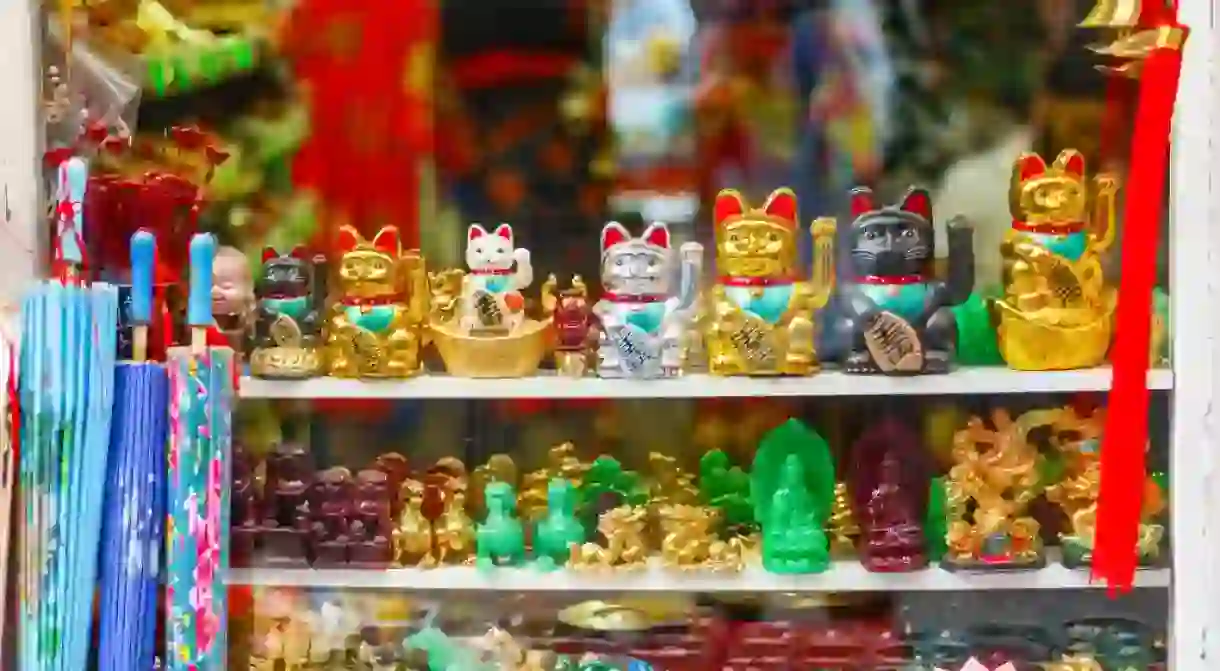Japanese Symbols of Luck and Good Fortune

We could all use a bit of extra luck from time to time. From Shinto talismans to lucky chocolates, these good luck charms from Japan will have your fortunes changing from bad to good to better in no time.
Maneki Neko, the beckoning cat
The Maneki Neko is a cat figurine believed to bring good luck. A classic Maneki Neko looks like Japanese bobtail cats with a calico coat, but the cat now comes in all types and colors. Typically, one or both paws are raised. They are often called “waving cats” in English because of the position of the paw, but in Japan, this gesture, with the palm facing down, is used to beckon someone toward you. Others see a cat raising a paw to wash itself.

Omamori, lucky talismans
Omamori are protective amulets that people can buy from shrines. The talisman is wrapped up in a brocade bag, and it’s considered bad luck to open it and peek inside. There are omamori meant as a general good luck charm, while others are very specific. There are charms for good grades, good fortune in business or love, and even for a healthy pregnancy and delivery.

Daruma, Bodhidharma dolls
Daruma dolls are figurines modeled after the Bodhidharma, the monk who founded Zen Buddhism. They are typically hollow, rounded figures with red clothes painted on, but each artist is free to take liberties with the design. The Daruma doll’s expertise is in wishes. When you buy them, the eyes are empty. You paint one eye and make a wish. When it comes true, you fill in the second eye to complete the pair.

Omikuji, paper fortunes
Omikuji are strips of paper containing good or bad predictions. They are available at shrines and temples in return for a small donation. If the fortune is good, you keep it and hang on to your luck. If the prophecy is bad, you tie the strip up on a wire or string at the shrine with the others and leave the bad luck behind you.

Ema, wishing plaques
Ema are a common sight at many shrines. They are small wooden plaques that people write their dreams and wishes on as a public declaration, and sometimes in the hopes that the resident kami (Shinto deity) will one day hear them. These wooden plaques are eventually burned in ceremonial fires at the shrines.

Koinobori, carp streamers
Koinobori are carp streamers. They are a traditional decoration for Children’s Day, a national holiday that occurs in May each year. These windsocks are a symbol of good luck and represent the family’s wishes to have happy, healthy and successful children.

Osechi ryori, New Year cooking
Osechi ryori are traditional foods eaten around New Year’s in Japan. Many of these foods are meant to bring luck in the new year for a certain aspect of life. For example, those wishing for children eat kazunoko or marinated herring roe, while those praying for good health eat soybeans.

Senbazuru, 1,000 paper cranes
Senbazuru are strings of 1,000 origami cranes—typically 25 strings, each with 40 cranes. Just like in the story of Sadako Sasaki and her thousand paper cranes, it’s believed that completing all 1,000 of them will grant the owner a wish. Senbazuru have become a symbol of healing and hope.

Kat Kat, the luckiest chocolate
Kit Kat came to Japan in the early 1970s. The chocolate ended up being very successful for a few reasons. One was that the name sounded similar to the Japanese kitto katsu or “surely win.” As a result, the chocolate became a popular gift for students around exam time, and many still associate it with luck and good fortune.

View these amazing tours and excursions in Japan.













